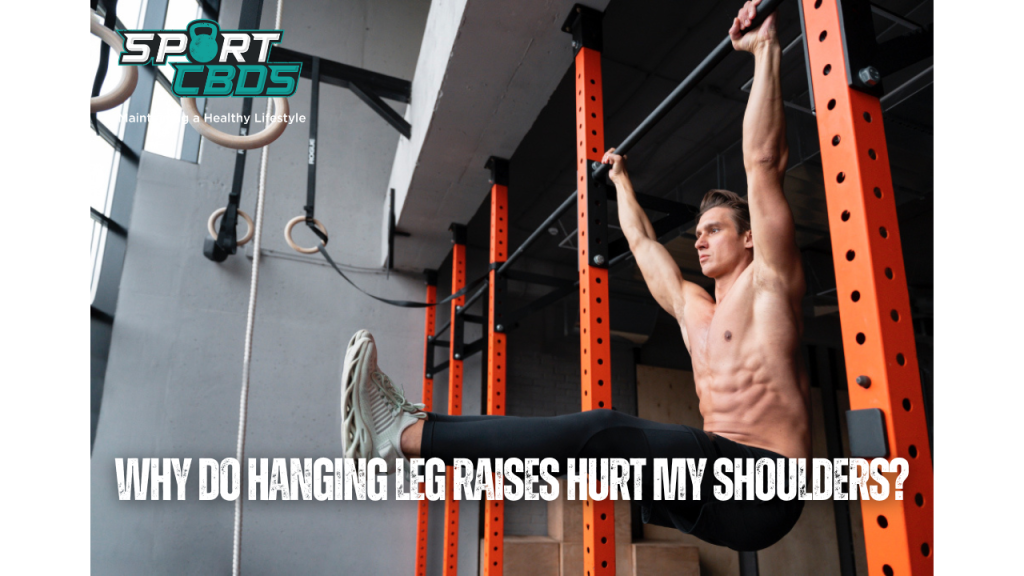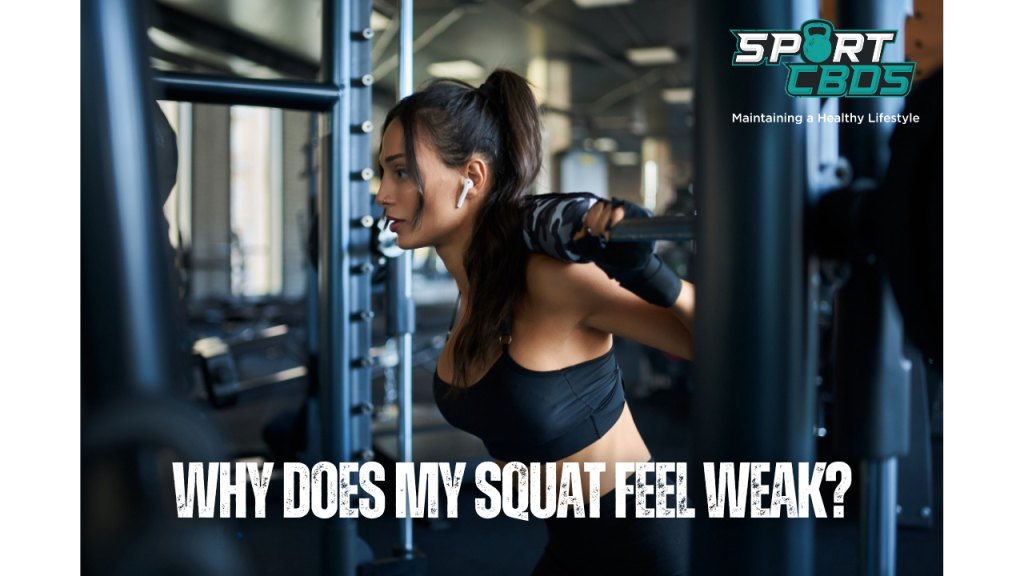
From Pain to Gain: Why Do Hanging Leg Raises Hurt My Shoulders?
Hanging leg raises are a popular exercise known for targeting the core muscles and enhancing overall strength. However, a common issue that many individuals face while performing this exercise is a sharp pain in the shoulders.
This pain not only hampers the effectiveness of the exercise but can also lead to serious injuries if not addressed properly. The purpose of this article is to delve into the underlying causes of this pain, explore common mistakes that lead to it, and provide actionable solutions to prevent and alleviate the discomfort.
By understanding the mechanics and applying the right techniques, you can enjoy the benefits of hanging leg raises without the accompanying shoulder pain.
Why Do Hanging Leg Raises Hurt My Shoulders?
Hanging leg raises may hurt the shoulders due to several underlying factors. The pain often stems from common mistakes such as performing the exercise from a passive hang, where the shoulders are relaxed, leading to instability and pain. Excessive internal rotation of the shoulders can cause the ball of the humerus to rotate too far out of the socket, and a lack of control in shoulder movement can strain the muscles and ligaments. Additionally, using an improper grip and excessively opening the shoulders can contribute to discomfort. By understanding these issues and implementing proper techniques such as active shoulders, proper grip adjustment, and focusing on external rotation and controlled movement, individuals can perform hanging leg raises without the accompanying shoulder pain.
Understanding the Problem
Description of the Pain
The pain associated with hanging leg raises often manifests as a sharp, intense sensation in the shoulders. Some individuals describe it as a feeling of the shoulders popping in and out of the socket. This discomfort can be alarming and may deter people from continuing the exercise, thereby missing out on its many benefits.
Common Mistakes Leading to Pain
- Passive Hang vs. Active Hang: A passive hang, where the shoulders are relaxed, can lead to instability and pain. An active hang, where the shoulders are retracted and depressed, provides better control and alignment.
- Internal Rotation of Shoulders: Excessive internal rotation of the shoulders during the exercise can cause the ball of the humerus to rotate too far out of the socket, leading to pain. Focus on maintaining a neutral or externally rotated position to avoid this issue.
- Lack of Control in Shoulder Movement: Control over shoulder movement is crucial in hanging leg raises. Lack of control can result in erratic movements that strain the shoulder muscles and ligaments. Practicing proper form and building strength in the rotator cuff can help in maintaining stability and preventing pain.
Understanding these common mistakes and learning how to correct them is the first step towards a pain-free experience with hanging leg raises. By paying attention to the details of shoulder positioning and movement, you can perform this exercise with confidence and efficiency.
Tips and Solutions
Active Shoulders Technique
Active shoulders play a vital role in performing hanging leg raises without pain. By engaging the shoulders, you can prevent unnecessary swinging and maintain stability throughout the exercise. To achieve active shoulders, you need to retract and depress, pulling your shoulders down and back, away from your ears.
Focus on engaging the muscles around the shoulder blades, including the lats and traps. Also, maintain alignment by keeping your body in a straight line, avoiding any arching or rounding. By practicing these techniques, you can perform hanging leg raises with control and precision, minimizing the risk of shoulder pain.
Grip Adjustment
The grip you use during hanging leg raises can significantly impact your comfort and effectiveness. Consider using a wider grip, as it may provide more comfort and stability. Don’t hesitate to experiment with different grip widths to find what feels best for you.
By adjusting your grip, you can find the optimal position that allows you to perform the exercise without straining your shoulders.
A strong grip provides better control and stability during the exercise, reducing the strain on the shoulders. It allows for proper alignment and engagement of the shoulder muscles, minimizing the risk of injury.
A study by the PubMed Central has shown that improving grip strength can enhance overall performance in hanging leg raises and reduce discomfort in the shoulders. Tools like this grip strengthener available on Amazon can be a valuable addition to your training routine.
Additionally, products like those found at the Sport CBDs store may aid in recovery and overall wellness, complementing your efforts to perform hanging leg raises without shoulder pain.
Related: Striving for Abdominal Perfection: Why Are Abs Attractive?
Shoulder Positioning and Rotation
Proper shoulder positioning and rotation are key to avoiding pain during hanging leg raises. Focus on external rotation when arms are overhead, concentrating on externally rotating them to prevent the humerus from rotating out of the socket.
Build strength in the rotator cuff through strengthening exercises, as this can enhance stability and control. Improve over-the-head flexibility with exercises like child’s pose with palms turned up to increase flexibility and alignment. These strategies help in maintaining proper shoulder positioning, reducing the risk of injury and discomfort.
Avoiding Excessive Opening of Shoulders
Excessive opening of the shoulders can lead to imbalance and strain. Train yourself to not open shoulders fully by practicing maintaining a controlled range of motion. Maintain a balanced position by focusing on keeping your shoulders aligned with the rest of your body.
By avoiding excessive opening of the shoulders, you can ensure a balanced and effective execution of hanging leg raises, reaping the benefits without the pain.
FAQs
Are hanging leg raises good for shoulders?
Hanging leg raises primarily target the core muscles, but they also engage the shoulders to some extent. When performed with proper technique, they can help in strengthening the shoulder muscles. However, improper form can lead to shoulder pain, so it’s essential to follow the correct guidelines.
What are the disadvantages of hanging leg raises?
The disadvantages of hanging leg raises may include potential strain on the shoulders, difficulty for beginners, and the need for proper equipment. These challenges can be mitigated with proper form, gradual progression, and appropriate guidance.
Why does my shoulder hurt from hanging?
Shoulder pain from hanging may result from a passive hang, internal rotation of the shoulders, or lack of control in shoulder movement. Understanding and correcting these common mistakes can alleviate the pain.
Is hanging bad for your shoulders?
Hanging is not inherently bad for the shoulders. In fact, it can be beneficial for shoulder mobility and strength. However, improper technique or pre-existing shoulder conditions may lead to discomfort or injury.
Should I do the exercise from a dead hang or an active hang?
An active hang, where the shoulders are retracted and depressed, is recommended for hanging leg raises. It provides better control and alignment, reducing the risk of shoulder pain.
How can I improve my comfort while hanging?
Improving comfort while hanging can be achieved by using a wider grip, experimenting with different grip widths, and focusing on proper shoulder positioning and rotation.
How to prevent the ball of the humerus from rotating too far out of the socket?
Preventing this rotation requires focusing on external rotation when arms are overhead, building strength in the rotator cuff, and improving over-the-head flexibility.
Can I get used to shoulder fatigue over time while doing leg lifts?
Yes, with consistent practice and proper technique, you can build endurance and strength in the shoulders, reducing fatigue over time while doing leg lifts.
Related: Revealing the Hidden Six-Pack: How to Get Abs to Show Without Flexing
Final Thoughts…
Hanging leg raises are a powerful exercise with numerous benefits, but they can also lead to shoulder pain if not performed correctly. This article has explored the underlying causes of this pain and provided comprehensive tips and solutions to prevent and alleviate discomfort.
By understanding the mechanics of the exercise and applying the proper techniques, you can enjoy hanging leg raises without the accompanying shoulder pain. Encouragement to practice these proper techniques and seek professional guidance if needed will lead to a more effective and enjoyable fitness journey.
Embrace the challenge, and let hanging leg raises become a valuable part of your workout routine.
Do hanging leg raises hurt your shoulders? Have our tips been beneficial to you? We’d love to hear your feedback, so please share your thoughts in the comments section below.
If you’re a sports enthusiast who utilizes CBD for optimal recovery after intense workouts, then you’ve found your tribe. Welcome to Sport CBDs, where we push our limits in training and prioritize recovery in the most effective way possible.
We regularly share workout routines on our YouTube channel and offer a range of health and fitness products designed to give you that competitive edge.
Why not explore the high-quality CBD products we proudly feature on our site? Visit the Sport CBDs Store by clicking here. In addition to CBD, we also offer an array of fitness clothing and yoga accessories to complement your active lifestyle.
Until next time, we wish you the best in your fitness journey. Remember, your progress is our passion. Stay strong and keep pushing!

Lee
Founder – Sport CBDs
Featured Image Attribution – Image by Freepik

